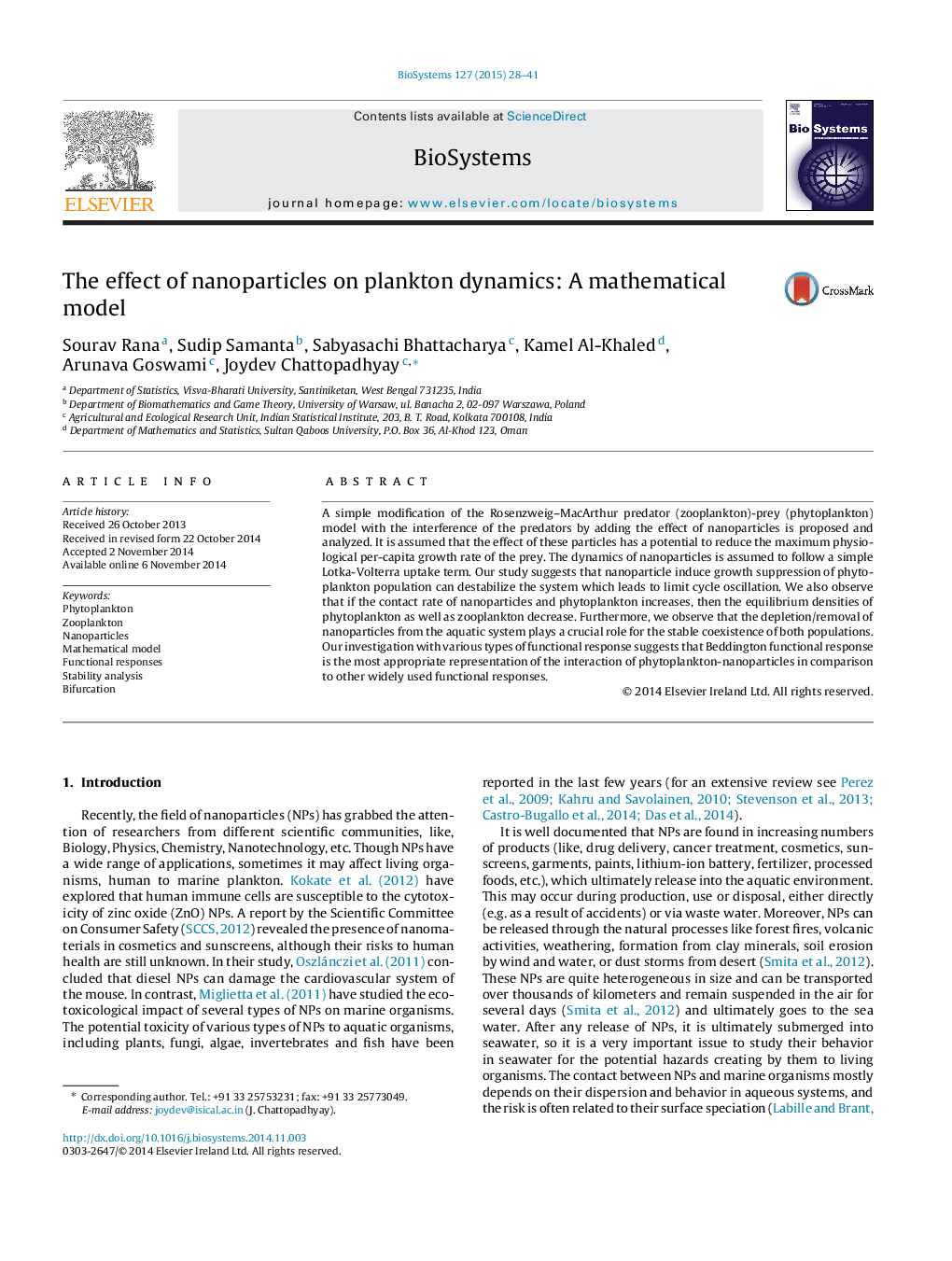| Article ID | Journal | Published Year | Pages | File Type |
|---|---|---|---|---|
| 2075906 | Biosystems | 2015 | 14 Pages |
•Nanoparticles suppress the growth rate of phytoplankton.•Study the effect of nanoparticles on the phytoplankton–zooplankton system.•The existence and local stability of the equilibria have been studied.•Nanoparticles may destabilize the aquatic food chain system via Hopf-bifurcation.•Degradation of nanoparticles enhances the persistence and stability of all species.
A simple modification of the Rosenzweig–MacArthur predator (zooplankton)-prey (phytoplankton) model with the interference of the predators by adding the effect of nanoparticles is proposed and analyzed. It is assumed that the effect of these particles has a potential to reduce the maximum physiological per-capita growth rate of the prey. The dynamics of nanoparticles is assumed to follow a simple Lotka-Volterra uptake term. Our study suggests that nanoparticle induce growth suppression of phytoplankton population can destabilize the system which leads to limit cycle oscillation. We also observe that if the contact rate of nanoparticles and phytoplankton increases, then the equilibrium densities of phytoplankton as well as zooplankton decrease. Furthermore, we observe that the depletion/removal of nanoparticles from the aquatic system plays a crucial role for the stable coexistence of both populations. Our investigation with various types of functional response suggests that Beddington functional response is the most appropriate representation of the interaction of phytoplankton-nanoparticles in comparison to other widely used functional responses.
